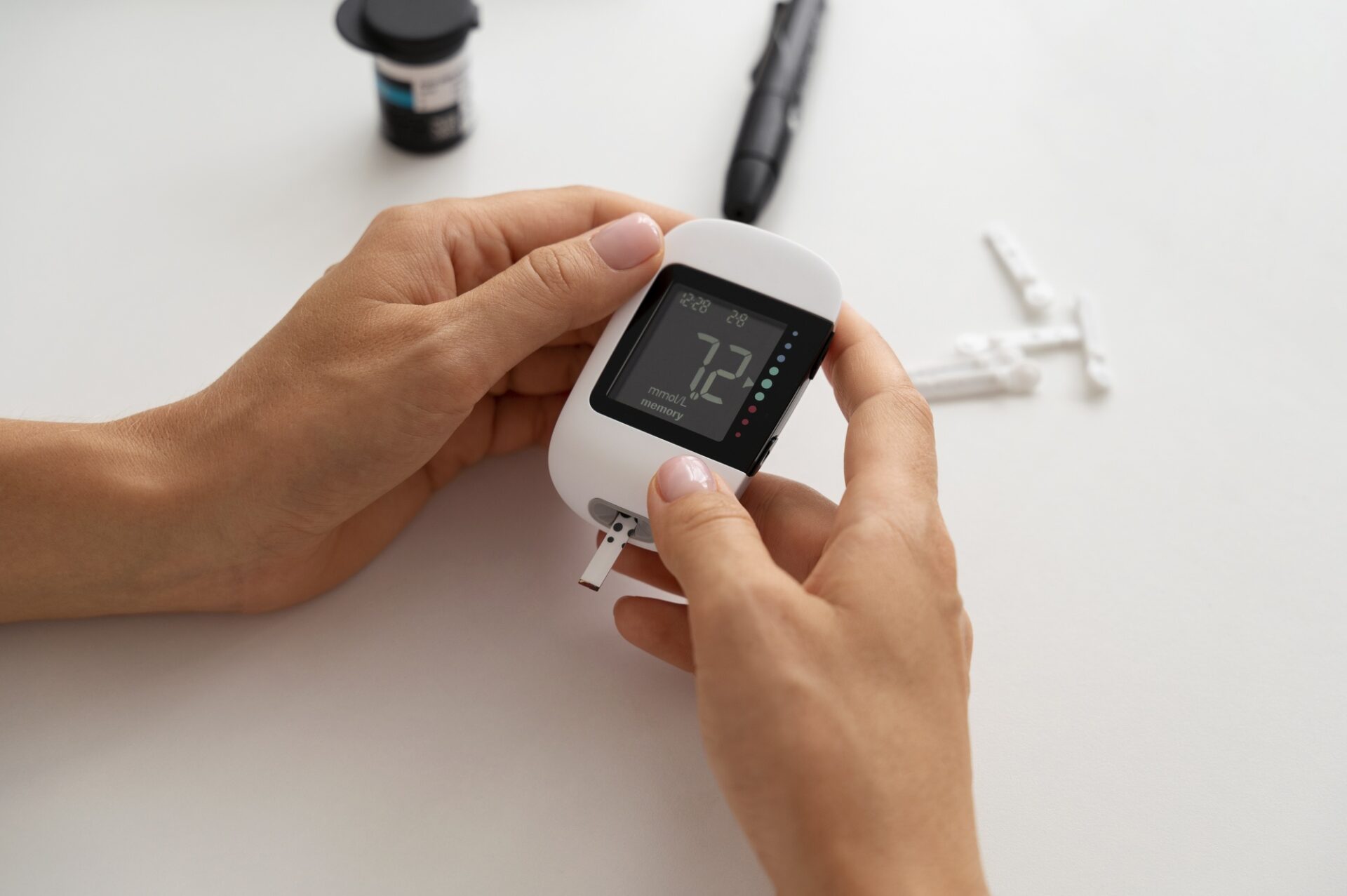Read DISCLAIMER
Regulating blood sugar levels naturally is a critical aspect of managing diabetes, and the inclusion of some foods in the diet can be very crucial in stabilizing glucose levels while improving overall health. These foods work through different mechanisms, such as slowing carbohydrate absorption, improving insulin sensitivity, and reducing inflammation, which are all essential for effective management of diabetes. By focusing on nutrient-rich, low-glycemic-index foods, which provide prolonged energy without peaking blood glucose levels, diabetic patients can achieve better control over their condition and minimize the development of complications. So, let’s dive deeper into the types of foods that may naturally regulate blood sugar levels in diabetic patients.
Good examples of leafy green vegetables that have low levels of carbohydrates include spinach, kale, and Swiss chard, all of which are rich in magnesium and vitamin C, the compounds that can enhance insulin sensitivity and reduce inflammation. Non-starchy vegetables include broccoli, cauliflower, zucchini, and bell peppers, among others, since they are replete with fiber and antioxidants, slowing down sugar absorption into the bloodstream. Broccoli, among others, is rich in a compound called sulforaphane, which research has proven reduces blood sugar levels and prevents any damage caused by diabetes.
Grains such as quinoa, barley, and oats are composed of high-fiber content. These grains result in a slower and more continuous release of glucose. One of the best breakfast cereals is the steel-cut oat, as they have a lower glycemic index and are higher in beta-glucan content, a form of soluble fiber that controls glucose levels in the blood. Other excellent sources to add to any diabetic diet would be legumes: lentils, chickpeas, or black beans. High in protein and fiber and rich in complex carbohydrates that delay digestion, preventing rapid blood glucose surges.
Berries such as blueberries, strawberries, and raspberries contain low amounts of natural sugars but high amounts of antioxidants, so they are considered a sweet treat for diabetics. Fruits like blueberries, strawberries, and raspberries contain anthocyanins, which are compounds that increase insulin sensitivity and decrease blood sugar levels after eating. Avocados are also a fruit that can be very beneficial to people with diabetes since they contain healthy monounsaturated fats and fiber, which contribute to stabilizing the blood sugar levels. Citrus fruits, such as oranges, grapefruits, and lemons, are also good sources of vitamin C and soluble fiber, without spiking sugar levels.
Nuts and seeds are always good snack time for the maintenance of blood glucose. The content of these include healthy fats, protein, and fiber that aids in improved glycemic control. Chia seed and flaxseed are two of the nuts and seeds whose benefits include incorporation of omega 3 fatty acids and lignan, which plays a significant role in maintaining good heart health with reduced inflammation levels.
Fatty fish, such as salmon, mackerel, and sardines, are important in a diabetes diet because they contain high levels of omega-3, which decreases inflammation and increases insulin sensitivity. Eggs are another protein that can help with appetite control and regulate blood sugar levels throughout the day. Pairing these proteins with high-fiber vegetables creates a balanced meal that supports stable glucose levels.
Cinnamon is a common kitchen spice that improves insulin sensitivity and lowers fasting blood sugar levels. Adding a teaspoon of cinnamon to meals or drinks can enhance flavor and provide significant metabolic benefits. Similarly, apple cider vinegar reduces post-meal blood sugar spikes when consumed before or during a meal, either diluted in water or used as a salad dressing.
Fermented foods like yogurt, kefir, and kimchi are great for gut health, which is important for blood sugar control. Probiotics in such foods enhance digestion and may also improve insulin sensitivity. When choosing yogurt, opt for unsweetened, plain types to avoid added sugars.
Drinking enough water will help flush out excess sugar in the body, and hydration is also important to diabetics. Herbal teas such as green tea and hibiscus tea are a good alternative to sugar-laden beverages, as they contain antioxidants that promote metabolic health.
Lastly, portion control and mindful eating are just as crucial as the foods you eat. This will be achieved by balancing meals with a mix of protein, healthy fats, and fiber while avoiding processed foods and sugary snacks. Combining high-carb foods with protein or fat slows down digestion and prevents glucose spikes. For instance, eating an apple with a handful of almonds or whole-grain toast with avocado can provide sustained energy and stabilize blood sugar levels.
In conclusion, the management of diabetes by natural food choice is to have low-GI, high-fiber, nutrient-rich food sources such as leafy greens, whole grains, legumes, berries, nuts, seeds, fatty fish, and fermented foods. All these should be taken in your diet and with proper usage of spices such as cinnamon and mindful eating habits, regulate blood sugar levels well and also enhance health in general.

Thanks for sharing. I read many of your blog posts, cool, your blog is very good.
Thanks for sharing. I read many of your blog posts, cool, your blog is very good.
I don’t think the title of your article matches the content lol. Just kidding, mainly because I had some doubts after reading the article.
Your article helped me a lot, is there any more related content? Thanks!
Your article helped me a lot, is there any more related content? Thanks! https://www.binance.info/ES_la/register?ref=T7KCZASX